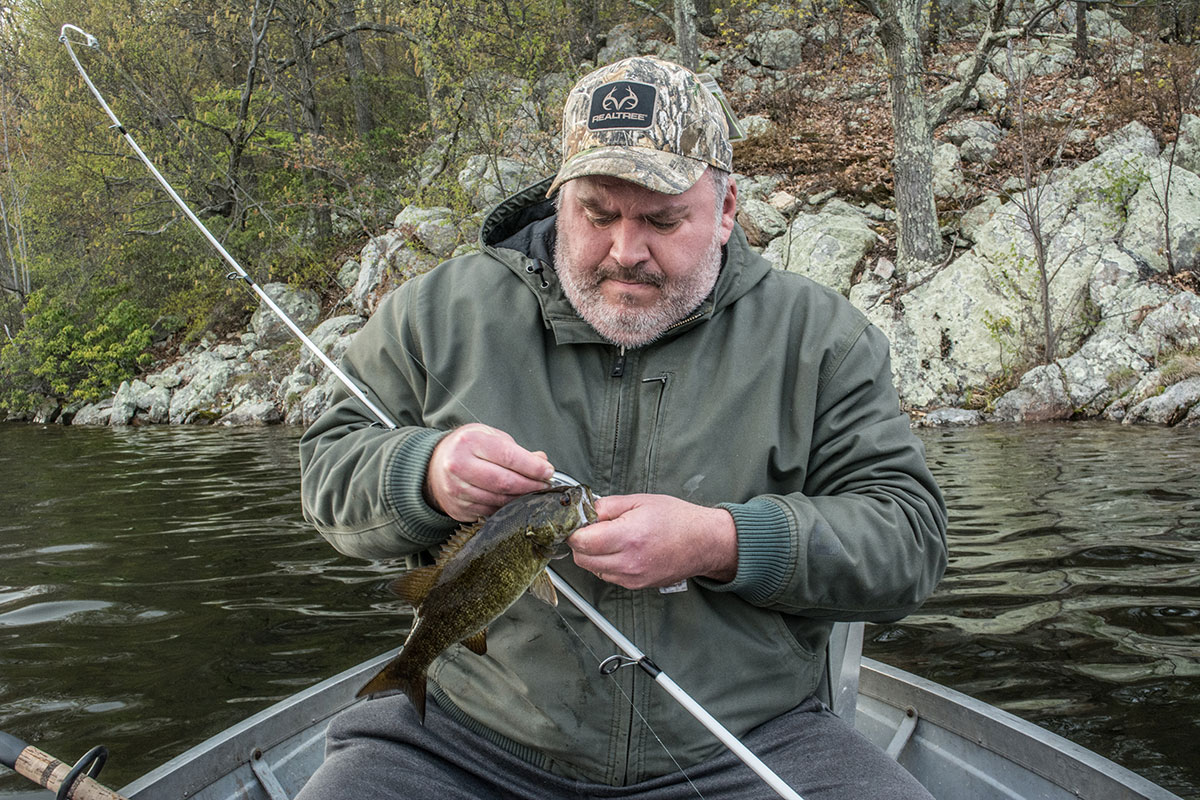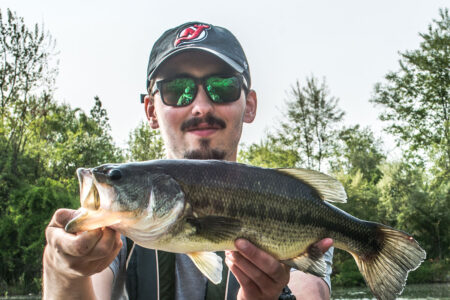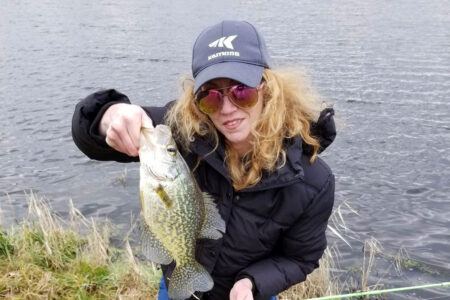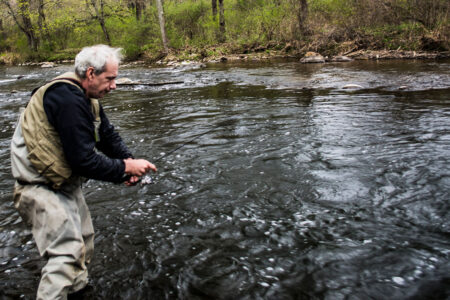
Keep it moving – but not too fast – for spring smallies
Sunlight heats rock in the lake and reservoir shallows, raising the temperature of surrounding water somewhat. Smallmouth bass associate with rock all year, but during April, it can help big females gestate their eggs. Naturally, the bucks like warmer water, too.
Last year, Brian Cronk and I fished a reservoir several times in April, with water getting into the mid-50s. We trolled shorelines about 10 feet deep, the water clear and the rocks absorbing the sunlight. You might think trolling big crankbaits slowly so they tick those rocks would be best, but trying that yielded no results. It’s not that smallmouths exclusively seek the most accommodating water temperature and always hug rocks, but I tried a Storm Hot ‘n Tot as if they do, which I catch plenty of fish in that reservoir on during the summer, fish associated with weeds that aren’t thick.
On our first try in April, Brian trolled a size 3 C.P. Swing. I don’t know how he got the idea, but in recent years, I had caught big largemouth on spinners during early spring. He had seen me do it once or twice. He caught a couple of nice smallies before I switched out the Hot ‘n Tot for my favorite Mepp’s Aglia Long. Even the red tubing on the treble hook adds appeal.
We didn’t have to troll terribly slow but not fast. Indeed, the bass didn’t seem to hug the rock unless they rose away from it because our spinners turned in the mid-column or even closer to the surface. I will never forget trolling my Mepp’s—one of a few in the box—with the tip of my Lew’s Speed Stick pointed directly at the lure for maximum feel on my finger. Soon, I felt a powerful wrenching sensation. Finding the 20-pound-test fluoro leader intact, my guess was that the snap had badly closed and straightened like a pin. Somewhere, I might have the snap-swivel as a souvenir; bending it back into shape is not possible.
I use 20-pound-test Power Pro braid, which is thin diameter and allows the spinner to ride deeper than it would with fluoro or mono of the same test. (Thin line means less water resistance.) I tie 4 feet of fluorocarbon leader to that mainline by uni-to-uni splice. The ball-bearing snap-swivel keeps the line from twisting. Make sure the snap-swivel is stronger than 20-pound test, but don’t use a large one. Keep a bend in the rod, too.
Trolling is a strategy for locating bass, not necessarily the mainstay technique, although for us last April, it took most of our time. We stopped and cast when we caught a bass or when structure looked too good to pass by. We never caught any casting—although I missed a topwater strike—until early June, when we caught post-spawn bucks on little jigs and a few nice spawned-out females on topwaters. One of those females Brian provoked into hitting a big Zara Spook.
I do suggest jigging after hooking up on the troll. Very small jigs of 1/16-ounce attached to paddletails like the Slim Swimz by Z-Man may be very effective by ticking the rocks or retrieving them higher in the water column. Trying 1/8-ounce or larger might be a good idea, but don’t feel you go too small with smaller.
Keep in mind, though, that the bass may be hitting not only because the water is warming but because that water is all but virgin. They haven’t seen lures for months. It does depend, though, on where you go. Some bass anglers are very persistent at throwing lures all winter, although, on many lakes and reservoirs, you might be among the first to fish this year.
And don’t rule out jerkbaits. Particularly along eastern shorelines that have taken westward sun all afternoon, they might work best when the sun has just gone down. (Mepp’s Aglia has reflecting tape on the blades, good earlier.) Lure selection becomes more and more intuitive the more successful the fishing you put under your belt. Some of the time, you won’t know why to change up, but you’ll know you should. If you get a hunch, go on it. If it pans out, you might be less hesitant next time.



